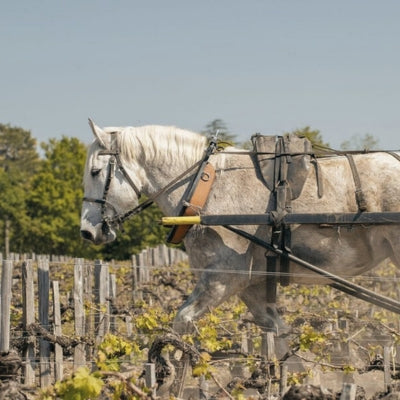
Biodynamics part I: an introduction to biodynamic viticulture and wine
In this first part of our biodynamics series, Westgarth Wines specialist Maurizio Broggi introduces the fundamentals of biodynamic viticulture, exploring its principles and controversies in wine production.
Biodynamic viticulture, a holistic farming method, goes beyond organic wine practices. While both approaches reject synthetic inputs, biodynamic farming in viticulture incorporates a distinct philosophical and ideological framework that has sparked ongoing debate within the wine industry.
As biodynamic wine gains popularity, more winegrowers are adopting biodynamic practices in vineyards. However, criticism persists due to the limited scientific evidence supporting some biodynamic farming methods, often justified through anecdotal observations and personal experience.
Steiner’s influence on biodynamic viticulture
Biodynamic agriculture, central to biodynamic viticulture, is rooted in the agricultural theories proposed by the Austrian philosopher Rudolf Steiner in the 1920s.
Steiner envisioned the farm as a self-sufficient, living organism capable of producing all its necessary inputs. Central to this approach is the integration of crops and livestock, the recycling of nutrients, and the promotion of the health of plants, animals, and soil.
A cornerstone of biodynamic farming is the recognition of the soil as a living organism influenced by both terrestrial and cosmic forces. Vineyard and cellar activities are meticulously timed according to these celestial rhythms, believed to provide beneficial energies that ultimately enhance the health and vitality of the vines and the entire farm ecosystem.
Biodynamic agriculture seeks to optimize biodiversity while minimizing external inputs. While sharing certain principles with organic viticulture (biodynamic certification requires prior organic status), its distinctive philosophy and idiosyncratic practices significantly differentiate it from organic methods. These unique approaches have frequently been subject to skepticism among conventional growers.
Biodynamic transformation in vineyards
Biodynamic viticulture emphasizes transforming the vineyard into a self-sustaining ecosystem. Central to this endeavor are specialized homeopathic preparations designed to enhance soil quality and stimulate plant life. These preparations are used to fertilize the soil, promote microbial activity, strengthen roots, combat diseases and pests, and more generally invigorate the life forces of the vineyard. Depending on the specific preparation, they are applied at specific times in tiny, diluted quantities to soil, vines, and compost.
Among the most disputed practices in biodynamics is the use of animal sense organs, such as cow horns, to enhance the effectiveness of certain preparations. Equally controversial is the requirement that these preparations be "dynamized" by stirring the contents of the horn in water, creating a vortex, and then reversing it. It is believed that "dynamization" allows water to enhance the effects of the preparation.
The impact of biodynamics on wine and soil health
Biodynamic practitioners believe that these practices contribute to the protection of ecosystems, soil regeneration, and the development of stronger, more pest- and disease-resistant vines.
One of the most frequently cited benefits of biodynamic viticulture is the observed increase in soil microbial activity, which is estimated to be higher in biodynamic vineyards compared to conventional ones. Olivier Humbrecht MW of Domaine Zind-Humbrecht in Alsace noted that his vineyards, once depleted and weak, experienced a substantial increase in earthworm populations following the application of biodynamic preparations, a clear indicator of improved soil health.
Research conducted by soil microbiologist Claude Bourguignon suggests that, in addition to enhanced microbial life, roots in biodynamically farmed vineyards exhibit greater health, strength, thickness, and depth of penetration. Equally significant are the perceived effects on the wines themselves. Biodynamic winemakers often describe biodynamic wines as being more "alive," with a more vivid and precise expression of the terroir.
Stay tuned for part II of our biodynamic series, which explores the necessary preparations, celestial influences, and biodynamic calendars.
Want to read more? Take a look at some of our other blogs:



